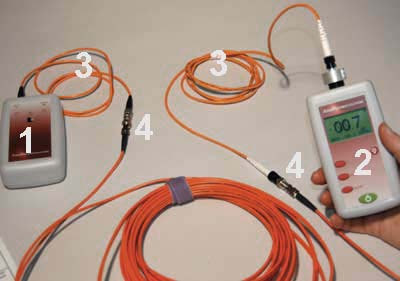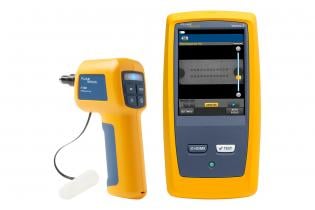Robotic vision supports optimizing manufacturing and quality control.
Discover the Importance of Optical Fiber Screening in Modern Telecommunications
In the world of modern telecoms, the importance of optical fibre screening can not be overemphasized, as it serves as the foundation for ensuring network integrity and performance. What are the details advantages that routine screening offers, and just how might it shape the future landscape of telecommunications?

Comprehending Optical Fiber Testing
Optical fiber testing is a vital process in telecoms that guarantees the stability and efficiency of fiber optic networks. This testing encompasses a variety of procedures created to examine the physical and practical features of optical fibers - ofda. Key criteria evaluated consist of optical power loss, data transfer capability, and mistake location, which are vital for preserving top quality interaction links
The testing process normally entails the usage of specialized tools such as Optical Time-Domain Reflectometers (OTDR) and Optical Power Meters. OTDRs are utilized to recognize and characterize mistakes, entwines, and adapters within the fibre, while power meters determine the transmitted light signal strength to identify efficiency.
Moreover, testing is performed at different phases, consisting of throughout installment, upkeep, and troubleshooting, to make certain that the network meets industry standards and operational requirements. Conformity with criteria established by companies like the International Telecommunication Union (ITU) and the Telecoms Market Organization (TIA) is critical.
Benefits of Regular Evaluating
Regular screening of optical fibres returns many benefits that substantially improve network reliability and performance. One of the key advantages is the early detection of possible concerns, such as breaks or destruction in the fibre, which can cause expensive downtime if left unaddressed (ofda). By recognizing these issues proactively, telecommunications service providers can decrease solution interruptions and make certain regular connectivity for their customers
Furthermore, regular testing assists to preserve the stability of signal high quality. As optical fibres age, their performance can be affected by elements such as ecological conditions and physical stress. Routine assessments enable the monitoring of signal loss and overall transmission efficacy, guaranteeing that the network operates at optimal levels.
One more substantial benefit is compliance with sector standards. Regular testing supports adherence to governing demands, therefore reducing lawful and financial threats related to non-compliance. It boosts the general life-span of the fiber infrastructure by assisting in timely upkeep and repairs.

Common Testing Methods
Checking optical fibers uses numerous techniques to ensure the honesty and efficiency of telecoms networks. Among the most common methods is Optical Time Domain Name Reflectometry (OTDR), which evaluates the whole length of the fiber by sending a pulse of light and measuring the representations triggered by flaws or breaks. This technique supplies detailed info concerning the area and seriousness of mistakes.
Another prevalent method is making use of Optical Power Meters, which gauge the amount of light transmitted via the fibre. This strategy assists identify the loss of signal toughness, making certain that it satisfies market standards. In go to these guys Addition, Aesthetic Fault Locators (VFL) are employed to determine breaks or severe bends in the fiber by projecting a noticeable laser light right into the wire.
Insertion loss screening is likewise important, as it quantifies the loss of signal power arising from links and mates within the network. The usage of Polarization Setting Dispersion (PMD) testing analyzes the impact of fiber attributes on signal stability.
Each of these techniques plays a crucial role in maintaining the efficiency and dependability of optical fibre networks, inevitably adding to smooth telecommunications procedures.
Effect On Network Performance
The integrity and efficiency of optical fiber networks straight influence general network performance. In modern-day telecommunications, the efficiency of information transmission depends heavily on the high quality of the optical fibres used. Any kind of deterioration in the fibre's condition-- whether due to physical damages, contamination, or extreme flexing-- can cause boosted depletion and signal loss, significantly impacting information integrity and speed.
Regular optical fiber testing is vital to identify and remedy prospective problems prior to they show up as network failings or stagnations. Strategies such as Optical Time Domain Name Reflectometry (OTDR) and insertion loss testing enable service technicians to gauge the performance of fibre links precisely. These tests not only examine the physical condition of the fibres but likewise make sure compliance with industry criteria, consequently protecting the network's integrity.
Moreover, a well-maintained optical fibre network adds to minimized operational prices and boosted consumer satisfaction, as end-users experience fewer disturbances and higher information rates. Ultimately, the emphasis on strenuous optical fibre screening practices works as a keystone for maintaining durable telecoms facilities, making certain that company can fulfill the growing needs for data transfer and connectivity in today's digital age.
Future Patterns in Checking
As go to this web-site we look in advance, innovations in technology are positioned to reshape optical fiber screening in telecommunications. The surge of automation and synthetic intelligence (AI) is expected to enhance the efficiency and precision of screening procedures. Automated screening systems can perform thorough evaluations with marginal human treatment, substantially lowering the potential for errors and accelerating time-to-deployment.
In addition, the integration of device understanding formulas will enable predictive maintenance, permitting network companies to predict potential problems prior to they escalate right into failings. This proactive approach not just improves network integrity yet likewise optimizes functional prices.
An additional emerging trend is the growth of mobile screening devices that provide real-time analysis - optical fibre testing equipment. These gadgets will empower service technicians to perform on-site diagnostics rapidly, helping with quicker resolutions and enhancing solution quality
The expansion of 5G networks additionally necessitates the advancement of testing techniques. As bandwidth needs enhance, traditional testing methods may no longer are sufficient. Ingenious services such as optical time-domain reflectometry important site (OTDR) and progressed spectral evaluation will end up being important in ensuring the integrity and efficiency of high-speed connections.

Conclusion
In final thought, optical fibre screening is necessary for guaranteeing the stability and reliability of modern telecommunications networks. Regular screening methods not just help recognize potential concerns such as signal loss and mistakes but also add to improved network performance and client contentment. As the demand for smooth connection proceeds to expand, the adoption of advanced screening techniques will certainly play an important duty in preserving premium network criteria and sustaining the developing landscape of telecommunications.